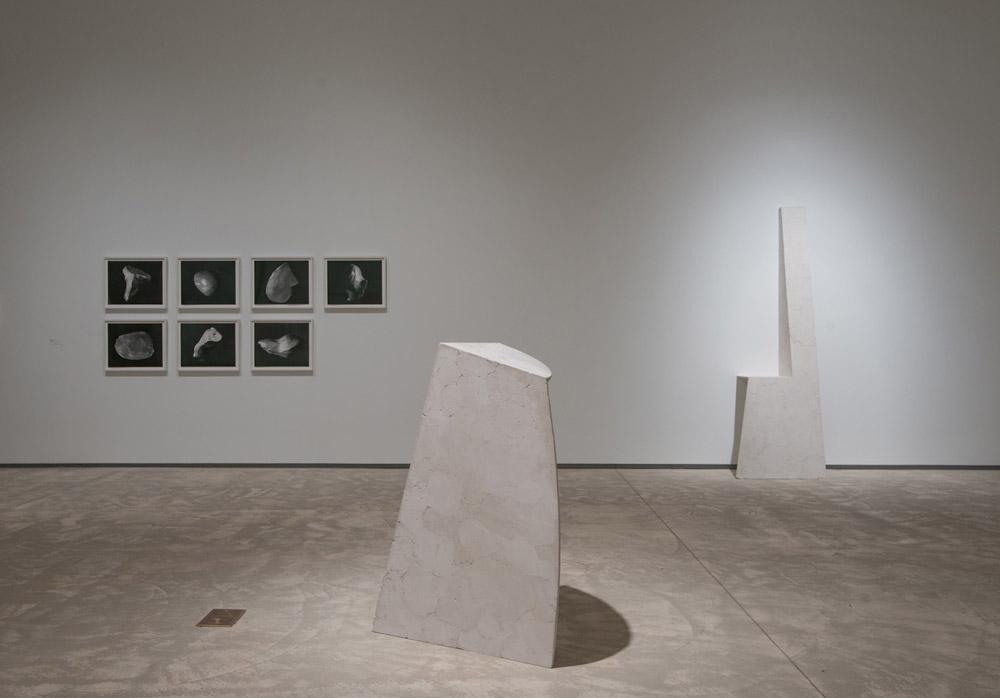As one of an increasing number of artists who are looking back at the freighted legacies of Minimalism and Conceptualism—particularly as viewed through their photographic representation—Erin Shirreff has been steadily garnering attention in exhibitions across the US and overseas.
It has been rarer, however, to see the Kelowna-born, New York–based artist’s work at home. The first solo exhibition of Shirreff’s work in Canada, “Available Light,” gives Canadian viewers a chance to engage with the artist’s preoccupations with the relationships between sculpture, the image and its serial variations. Curated by Sandra Dyck and Jan Allen, the show offers a selection of Shirreff’s photography, sculpture and video produced between 2009 and 2011. Currently on display at the Agnes Etherington Art Centre in Kingston, it debuted at the Carleton University Art Gallery in Ottawa in February 2012. A related Shirreff exhibition will also open at the Contemporary Art Gallery in Vancouver later this year.
Most commanding in “Available Light” are its three video works. One of these—Ansel Adams, RCA Building, circa 1940 (2009)—plays on a vertically oriented flatscreen monitor. The other two are projected on angular structures specifically made for the space: Moon (2010) juts out of a wall, while UN 2010 (2010) is found in a corner on a large, skewed surface.
Each video offers washes of light and shadow over muted images. Created by shooting and re-shooting photographic prints under different studio-light conditions, they are less documentation than artificial constructions of still images which suggest the passing of time—night turning to day, or the sun travelling across the potted surface of the moon. Interruption of any naturalistic impression is most noticeable in UN 2010, where intentional distortions and glitches result in myriad images and meanings emerging within an ostensibly “still” picture.
If Shirreff’s videos are the most commanding aspect of the show (and fortunately, their obviousness is tempered by the utter lushness of their imagery) the relationships generated between sculpture and its photographic representation are the most rewarding.
On opposite walls hang two separate photo series. Untitled (Series 1) comprises silver gelatin prints of small-scale sculptures under stark lighting—objects that emerge as archaeological fragments or relics undergoing classification or documentation. Monograph (No. 1) consists of six images from Shirreff’s ongoing project Signature; these photographs appear to be of small sculptural models (think Tony Smith or Robert Murray), yet are invented from images that have been pieced or collaged together. The Monograph photographs also have a fold down the middle, as if they were from a magazine spread or a study of Modernist sculpture. The result is an example of sculpture made to solely exist in photographic form.
Between these photographic series lie two actual, sizable sculptures that have ambiguous references.
One sculpture is free-standing and the other leans against a wall. They engage the body with their angles and curves, drawing the viewer in with their spatial play. Both are made from clumps of compressed ash and Hydrocal, and the textures are refined. They could be architectural fragments or oversized models.
Like Shirreff’s videos and photographs, these sculptures fundamentally rely on light to generate their power. Upon careful observation, one begins to notice how shadows enclose their shapes, completing the image or “form” of each sculpture. Like the three-dimensional planar projection structure of Moon, these works capably engage multiple spatial modes. But as gleefully as they might exploit the gaps between sculpture and photography, they are always already shadows of themselves.









